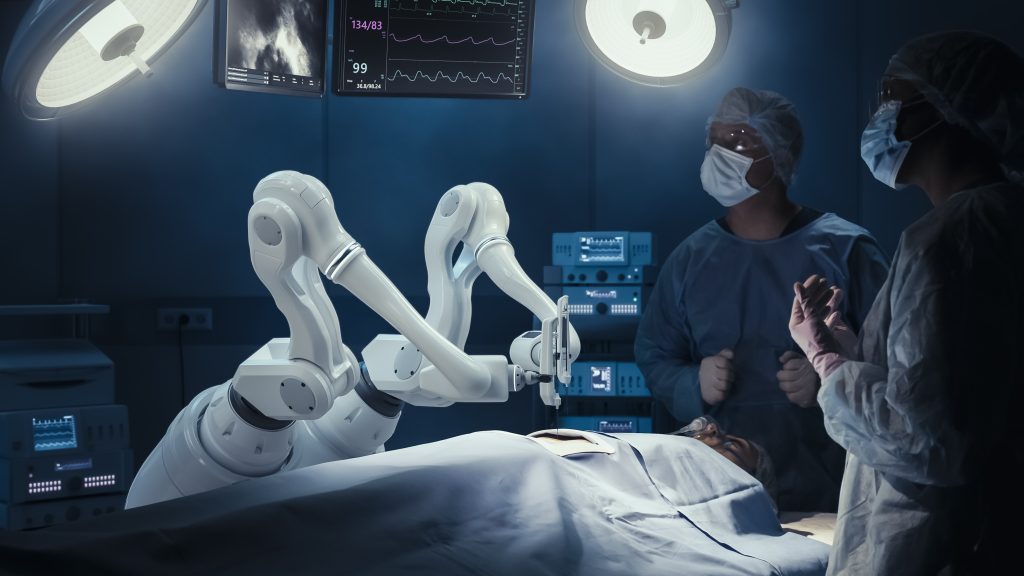The healthcare industry is at the forefront of a technological revolution, and as we move closer to 2025, the integration of robotics and artificial intelligence (AI) is reshaping the landscape. These advancements are not just enhancing efficiency; they are redefining the standards of care, diagnosis, and treatment. Here, we explore the profound impact of robotics and AI in healthcare and what we can expect by 2025.
Application of AI in healthcare robotics can be used to both:
-
- Improve the precision and speed in diagnostics
-
- Revolutionize surgical procedures to reduce complications and improve prognosis.
AI algorithms, powered by deep learning and vast datasets, have reached unprecedented levels of accuracy in diagnostics. By 2025, AI is expected to identify diseases such as cancer, heart conditions, and neurological disorders more precisely and at earlier stages than ever before. For instance, AI-powered imaging systems analyze X-rays, MRIs, and CT scans in seconds, detecting anomalies that might escape the human eye.
Robotic systems are complementing AI by performing delicate biopsies or surgeries guided by AI-diagnosed data. This synergy between robotics and AI minimizes human error and accelerates the diagnostic process, allowing for timely interventions.
Similarly, robotic-assisted surgeries are becoming increasingly common, and by 2025, they are going to be adapted more and more in operating rooms worldwide. Some new systems are already enabling surgeons to perform minimally invasive procedures with unmatched precision. By integrating computer vision and analytics, these robots have the capability to predict potential complications and assist in decision-making during surgery. In the future, surgical robots could likely be semi-autonomous, handling routine tasks and leaving surgeons to focus on complex decision-making. This reduces fatigue, enhances outcomes, and makes surgeries safer and more accessible.
While the benefits of robotics and AI in healthcare are undeniable, they also raise ethical and regulatory concerns. Policymakers and industry leaders must address issues like data privacy, algorithmic bias leading to hallucinations, and the potential displacement of jobs. Establishing robust frameworks will ensure that these technologies are used responsibly and equitably.
As we approach 2025, the fusion of robotics and AI in healthcare is no longer a distant vision but an imminent reality. These innovations promise to enhance the quality of care, improve patient outcomes, and make healthcare more accessible worldwide. However, the journey also demands careful navigation of ethical, societal, and regulatory challenges.
The healthcare landscape of 2025 is expected to be one where humans and machines collaborate harmoniously, leveraging technology to heal and save lives. The question is not whether robotics and AI will transform healthcare but how swiftly and equitably this transformation will unfold

